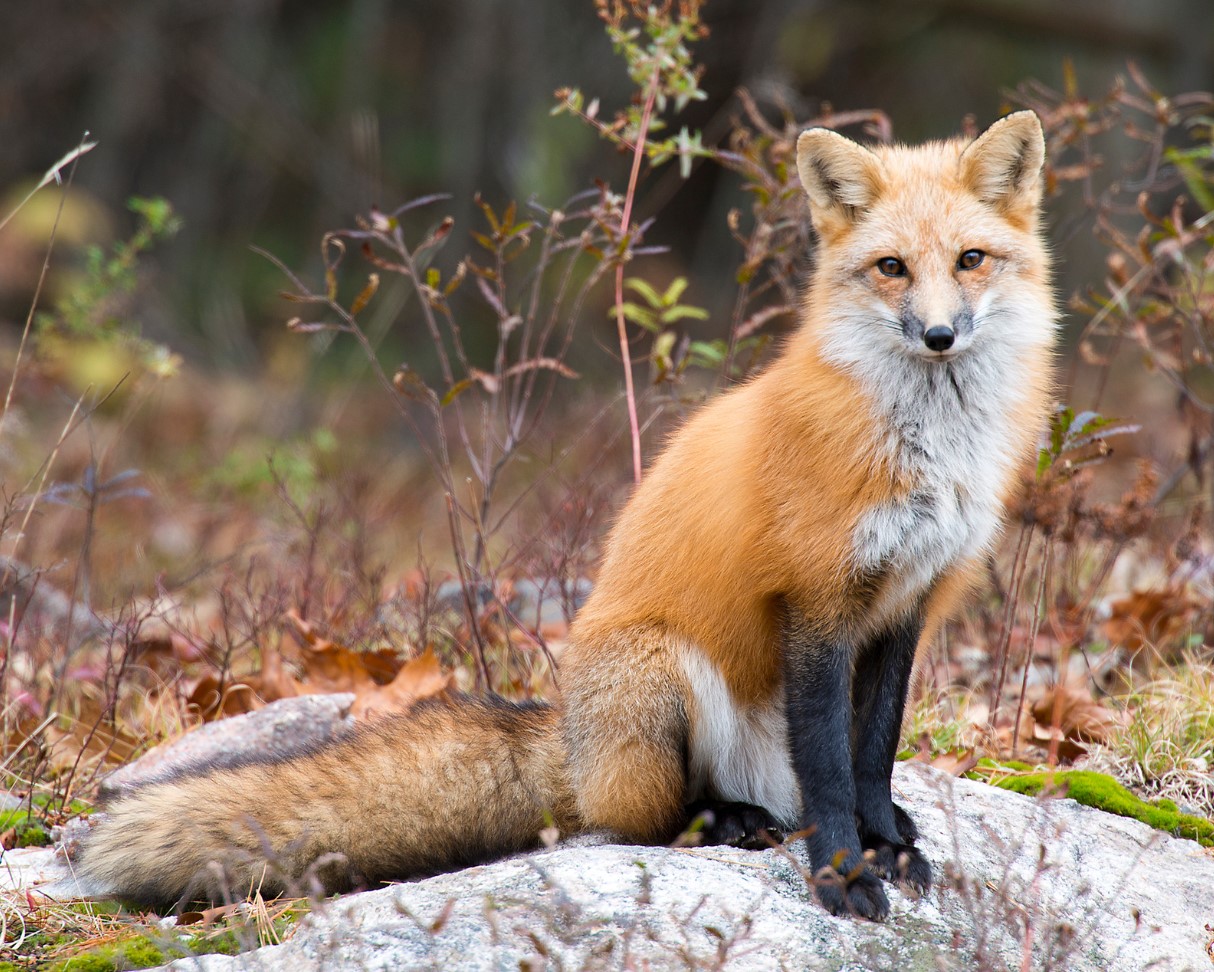Origin Of The Fox Breed
The fox is a fascinating animal, known for its cunning and intelligence. But where did this breed originate from? Let’s take a look at the origin of the fox breed.
The fox is a member of the Canidae family, which also includes wolves, coyotes, and domestic dogs. It is believed that foxes first appeared on Earth approximately 34 million years ago, during the Oligocene era. Over time, they evolved into the various species we see today.
- The oldest known fox species is the extinct genus Vulpes, which lived in North America during the late Miocene or early Pliocene epoch.
- One of the more well-known species of fox is the red fox, which can be found in North America, Europe, Asia, and Africa. The red fox is known for its orange-red fur and black legs, and is the largest of the true foxes.
- Another popular species of fox is the gray fox, found in North and South America. The gray fox has a gray coat and a distinctive black stripe down its back.

While the exact evolution of the fox breed is not known, what is clear is that they have been around for millions of years, and have played an important role in the ecosystems in which they live. From their cunning hunting skills to their adorable appearance, foxes have captivated humans for centuries.
| Species | Description |
|---|---|
| Red fox | Largest of the true foxes, known for its orange-red fur and black legs. |
| Gray fox | Found in North and South America, with a gray coat and black stripe down its back. |
| Fennec fox | Smallest of the foxes, found in the Sahara desert with large ears and light-colored fur. |
Overall, the origin of the fox breed remains a mystery in many ways, but what we do know is that they are a unique and important part of our world.
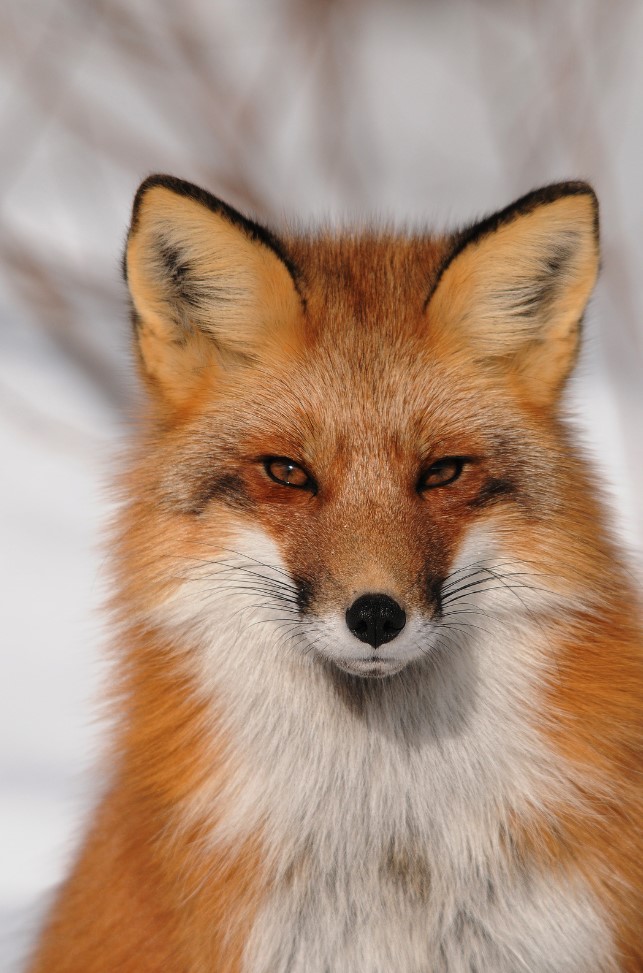
Characteristics Of The Fox Breed
The Fox Breed is a family of small to medium-sized canids that are found all around the world. Foxes are considered some of the most adaptable and secretive animals in the wild, with many unique Characteristics that distinguish them from other canid species.
Firstly, foxes are known for their bushy tails, called the “brush.” This characteristic sets them apart from other canids such as wolves and coyotes. Another unique feature is the fox’s eyes, which are uniquely designed for their nocturnal or crepuscular lifestyle. Foxes have vertically slit pupils that help them see in low light or at night.
Secondly, foxes are omnivorous and opportunistic, which means they eat anything from small animals to fruits, berries, and even carrion. Their teeth are sharp and pointed, making them efficient carnivores, and they also have molars that allow them to grind vegetation. Foxes are also known for their incredible speed and agility, which helps them catch their prey.
- The most common fox species is the Red Fox, found in North America, Europe, and Asia.
- The Arctic Fox is adapted to life in cold regions and has thick fur for insulation.
- The Grey Fox has one of the widest ranges of any canid, from southern Canada to South America.
- The Swift Fox is an endangered species found in the Great Plains of North America.
| Fox Breed Characteristics | Description |
|---|---|
| Bushy Tail | Distinctive feature that sets them apart from other canids |
| Vertically Slit Pupils | Designed for their nocturnal or crepuscular lifestyle |
| Omnivorous & Opportunistic | Eat anything from small animals to fruits, berries, and even carrion |
| Sharp, Pointed Teeth | Efficient carnivores, with molars that allow them to grind vegetation |
| Speed & Agility | Helps them catch prey and evade predators |
Foxes are highly adaptable animals that have managed to survive in diverse environments. They are social animals that live in family groups and communicate through a variety of sounds and body language. These amazing animals have captured the imagination of people for centuries and continue to fascinate us with their unique characteristics and behaviors.
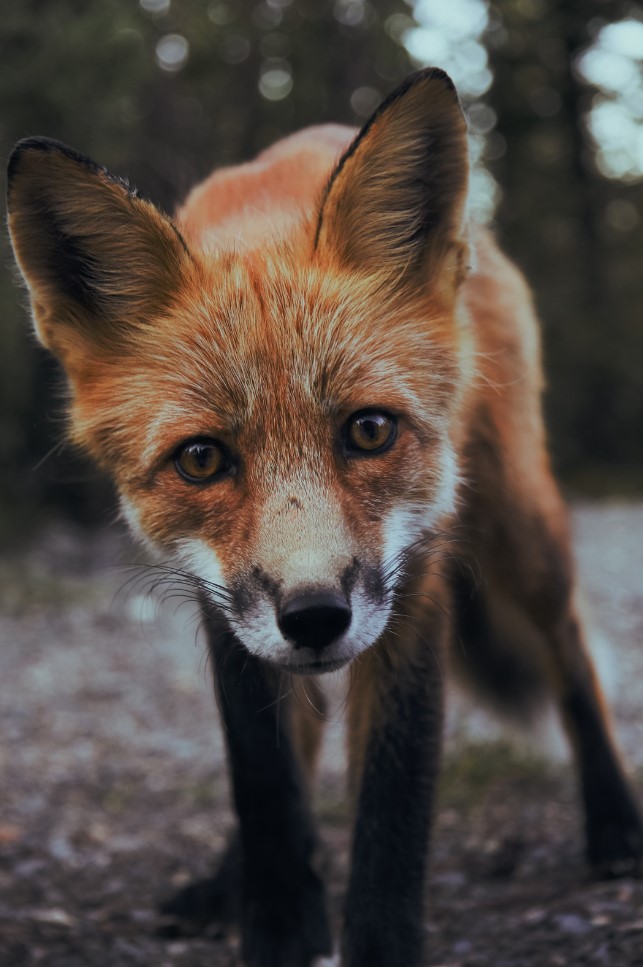
The History Of Fox Hunting
Fox hunting is a centuries-old practice that has been historically significant in many cultures. It has been a popular sport since the 16th century in England and has spread to other countries around the world. Fox hunting involves tracking and hunting foxes, usually by trained dogs and horses. Although it is a controversial sport today, it has played an important role in history.
The origins of fox hunting can be traced back to the 16th century in England. It was initially a way to control the fox population, which was considered a pest by farmers. However, it soon became a popular sport among the aristocracy. Fox hunting became a social event where the wealthy could gather and enjoy the thrill of the hunt. It also provided an opportunity for people to showcase their horses and riding skills.
- One of the key aspects of fox hunting is the use of trained dogs. Hunting dogs, such as the Foxhound, were bred specifically for this purpose. They were trained to track and chase foxes, leading the hunters to their location.
- The hunting party would be led by a Master of Foxhounds, who was responsible for the dogs and ensuring that the hunt followed the proper protocol. The Master would also lead the hunt on horseback.
- There were also typically a number of servants who would accompany the hunters, performing tasks such as carrying equipment and preparing meals.
In the 19th century, fox hunting became a popular pastime in America as well. It was considered a prestigious sport that was enjoyed by the wealthy. However, as the years went by, attitudes towards fox hunting began to change. With increased awareness of animal rights and conservation, many people began to criticize the sport as cruel and unnecessary. Many countries have now banned fox hunting, including England, Scotland, and Wales.
Despite its controversial status, fox hunting continues to be a part of the cultural heritage of many countries. It has played an important role in history and has left a lasting impact on society. Whether you view it as a cruel sport or a beloved tradition, the history of fox hunting is an interesting and complex subject.
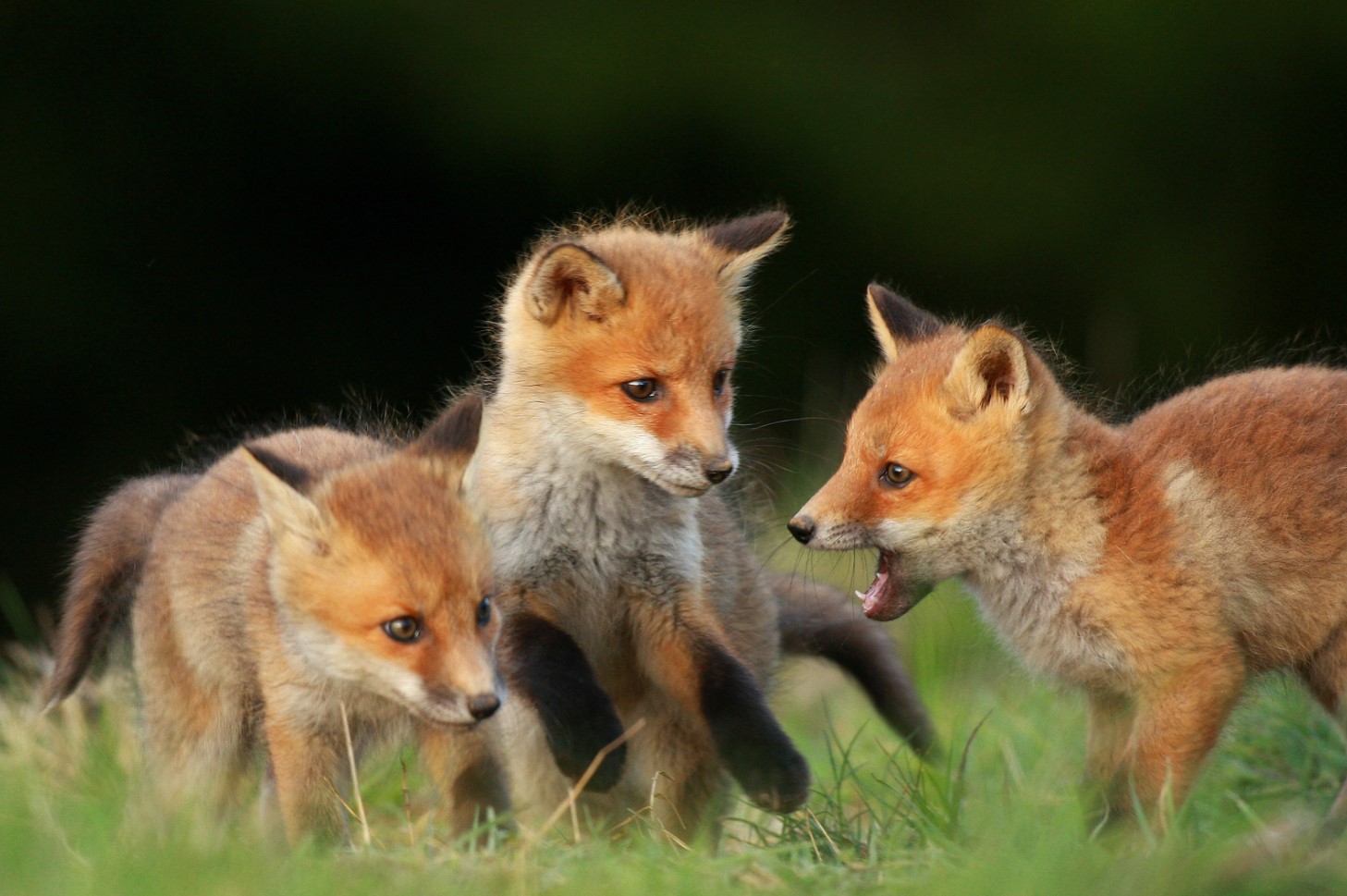
The Fox Terrier
The Fox Terrier is a small yet energetic dog breed that is known for their hunting skills and loyalty to their owners. Originally bred in England for fox hunting in the 18th century, this breed quickly gained popularity for their ability to chase foxes out of their dens. Today, the Fox Terrier is largely kept as a companion dog due to their friendly nature and striking appearance.
There are two types of Fox Terrier: the Smooth Fox Terrier and the Wire Fox Terrier. The Smooth Fox Terrier has a short, shiny coat that is predominantly white, while the Wire Fox Terrier has a wiry, longer coat that can come in a variety of colors such as white, black, and tan. Both types of Fox Terriers have a pointed face with dark, expressive eyes and a keen sense of smell that is ideal for hunting small game.
- The Wire Fox Terrier is known for its distinctive whiskers that frame their face
- Fox Terriers are highly intelligent dogs that require plenty of mental stimulation to prevent destructive behavior
- They are also highly active and require regular exercise to prevent weight gain and to release their excess energy
The Fox Terrier is known for its loyalty to its owners and its independent nature. They are highly trainable and respond well to positive reinforcement techniques such as clicker training, but can also be stubborn at times. They are excellent family pets that get along well with children and other pets, as long as they are socialized from an early age.
| Pros | Cons |
|---|---|
| Highly intelligent | Can be stubborn |
| Loyal to their owners | Require regular exercise |
| Excellent family pets | Can exhibit destructive behavior if not adequately stimulated |
If you are considering adding a Fox Terrier to your family, it is important to do your research and find a reputable breeder. Like all purebred dogs, Fox Terriers can be prone to certain health issues such as deafness, allergies, and patellar luxation. By taking proper care of your Fox Terrier and providing them with plenty of love and attention, you can enjoy many happy years with your new furry friend.
The Fennec Fox
The Fennec Fox is a small nocturnal animal, living in the Sahara Desert in North Africa. Its most distinctive feature is its large ears, which provide the Fennec with exceptional hearing and also help regulate its body temperature.
Despite its small size, the Fennec Fox is an incredible survivor. With temperatures often rising above 100 degrees Fahrenheit during the day, and dipping below freezing at night, the Fennec has adapted to life in one of the harshest environments on earth.
The Fennec Fox is a solitary creature, only seeking out the company of other Fennecs during mating season. They are omnivorous and their diet includes small rodents, insects, and vegetation. It can go without water for an extended period of time because it can extract water from the plants it eats.
- The Fennec Fox is a social media star. With its adorable face and big ears, it’s no surprise that videos and pictures of the Fennec have gone viral on the internet.
- Despite its online popularity, the Fennec Fox is under threat in its natural habitat due to climate change and habitat destruction. Conservation efforts are underway to protect the Fennec and other desert animals.
To wrap up, the Fennec Fox may be small, but it is a true survivor. Its unique adaptations have allowed it to thrive in one of the most challenging environments on earth. It is a fascinating animal that has captured the hearts of people all over the world.
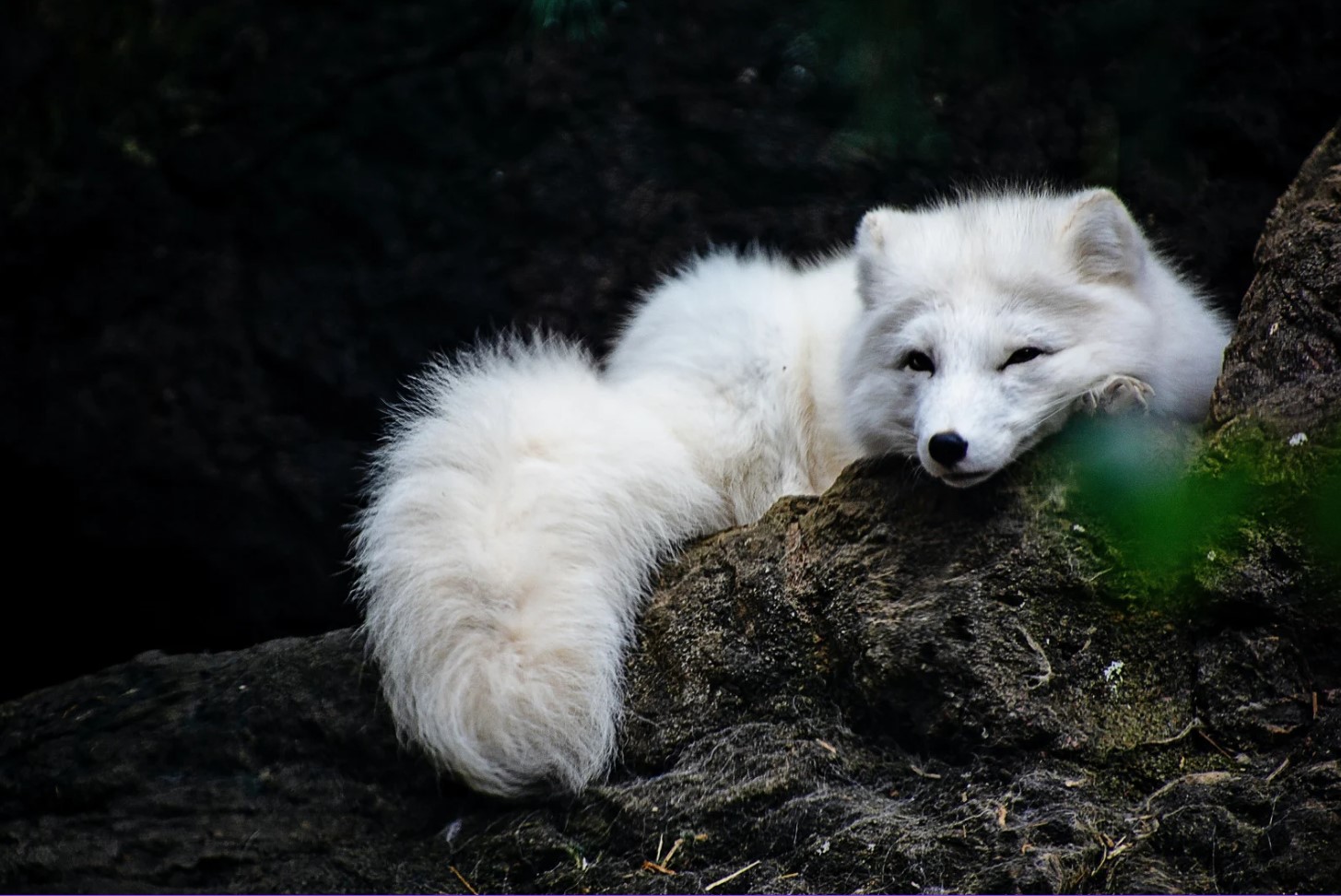
The Arctic Fox
The Arctic Fox is a small, agile animal that is well-equipped to survive in the harsh Arctic climate. Known for its thick, white fur, this fox is found throughout the Arctic region, from Alaska to Greenland. The scientific name for the Arctic Fox is Alopex lagopus, which means “Hare-footed fox.”
The Arctic Fox is one of the smallest members of the canid family, with an average length of about 24 inches and a weight of around 6-10 pounds. Their small size allows them to move quickly and easily through the snow and ice, making them excellent hunters.
- Arctic Foxes have fur on the bottom of their feet, which helps them to grip slippery surfaces and move quickly over snow and ice.
- Their thick fur coat also keeps them warm in temperatures as low as -50 degrees Celsius.
- Arctic Foxes have a very high metabolism, which allows them to burn off excess fat and stay warm in cold temperatures.
| Physical Characteristics | Behavior and Adaptation |
|---|---|
| Thick, white fur | Ability to change fur color from white to gray/brown in summer for camouflage |
| Small size | Ability to store food and survive long periods of food scarcity |
| Fur on paws | Fast, agile hunters who can catch prey larger than themselves |
Arctic Foxes are known for their incredible adaptability. They are able to change the color of their fur from white to gray or brown during the summer in order to blend in with their surroundings. They are also capable of storing food during periods of abundance, allowing them to survive long periods of food scarcity.
Despite their small size, Arctic Foxes are incredible hunters. They are fast and agile, and are able to catch prey that is larger than themselves. Their diet consists mainly of lemmings, but they also feed on birds, eggs, and fish.
Overall, the Arctic Fox is a remarkable animal that is well-adapted to survive in one of the harshest environments on earth. Its unique characteristics and adaptations make it a fascinating subject of study for researchers and animal lovers alike.
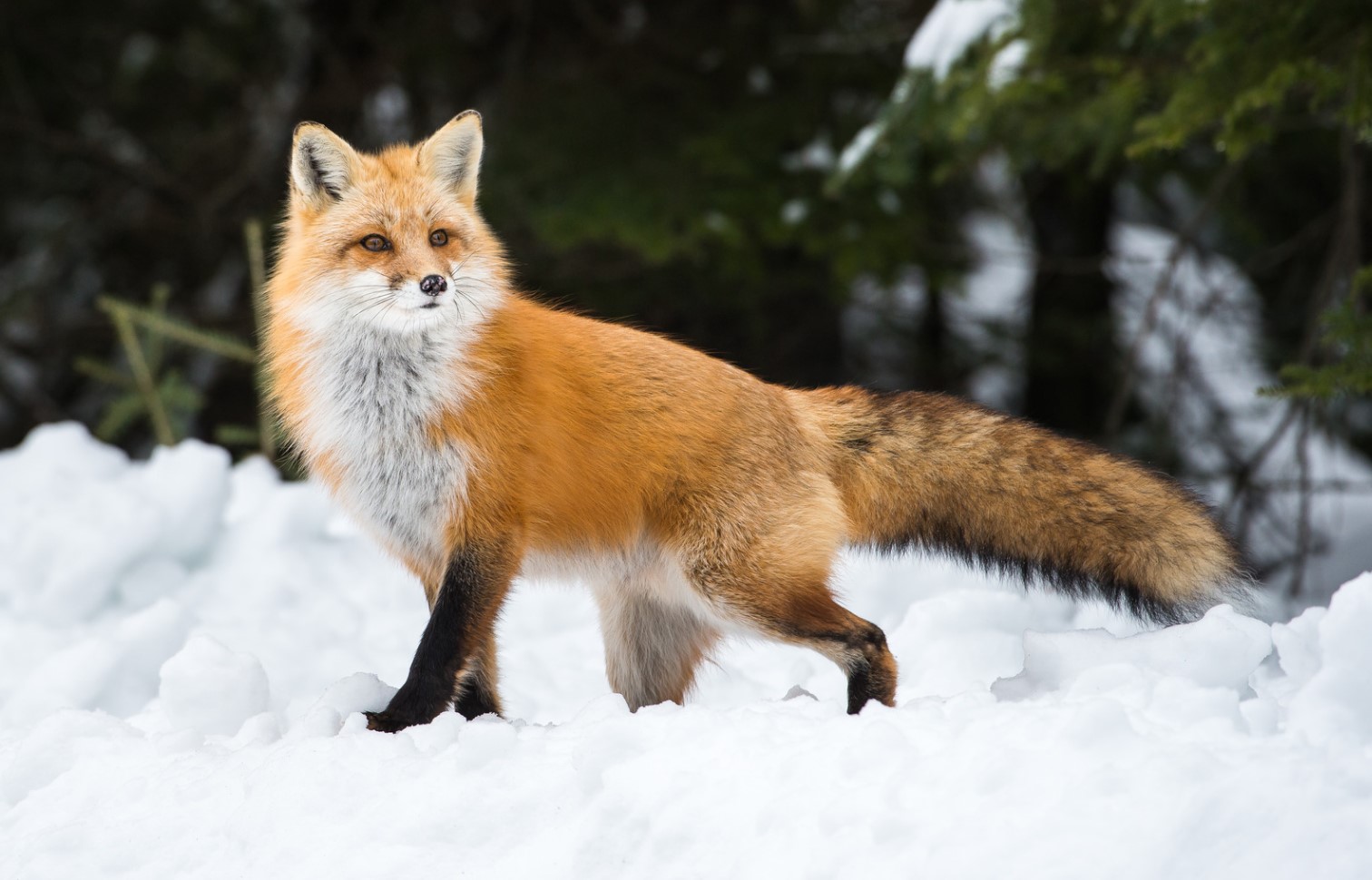
The Red Fox
The Red Fox, otherwise known as Vulpes vulpes, is one of the most widespread species of fox in the world. These foxes have a reddish-brown fur coat, which blends perfectly with the forest floor, and a bushy tail that helps them maintain balance while running, climbing, or making sudden stops.
The Red Fox is a highly adaptable animal, and its habitat includes almost every environment on the planet. These animals can be found in deserts, grasslands, forests, mountains, and even urban environments. In fact, they’ve been documented in cities like London, Paris, and Berlin where they scavenged for food among trashcans and back alleys.
- Red Foxes are omnivores, which means they can eat both plants and animals.
- They have excellent hearing and sense of smell, which helps them locate prey and avoid predators.
- Red Foxes are solitary animals, but they do form pairs during the breeding season, which usually starts in January and ends in March.
- Baby foxes are called kits, and a typical litter size is between four and six kits.
The Red Fox has been an important animal in human culture for thousands of years. In ancient myths and legends, foxes were portrayed as tricksters or shapeshifters. They’ve also played important roles in traditional medicine, where their fur, bones, and body parts were used to cure various illnesses.
However, in modern times, the Red Fox is often seen as a pest or nuisance, especially in areas where they can cause damage to crops, domestic animals, or even homes. Despite this, the Red Fox remains a fascinating and adaptable animal that can survive in almost any environment.
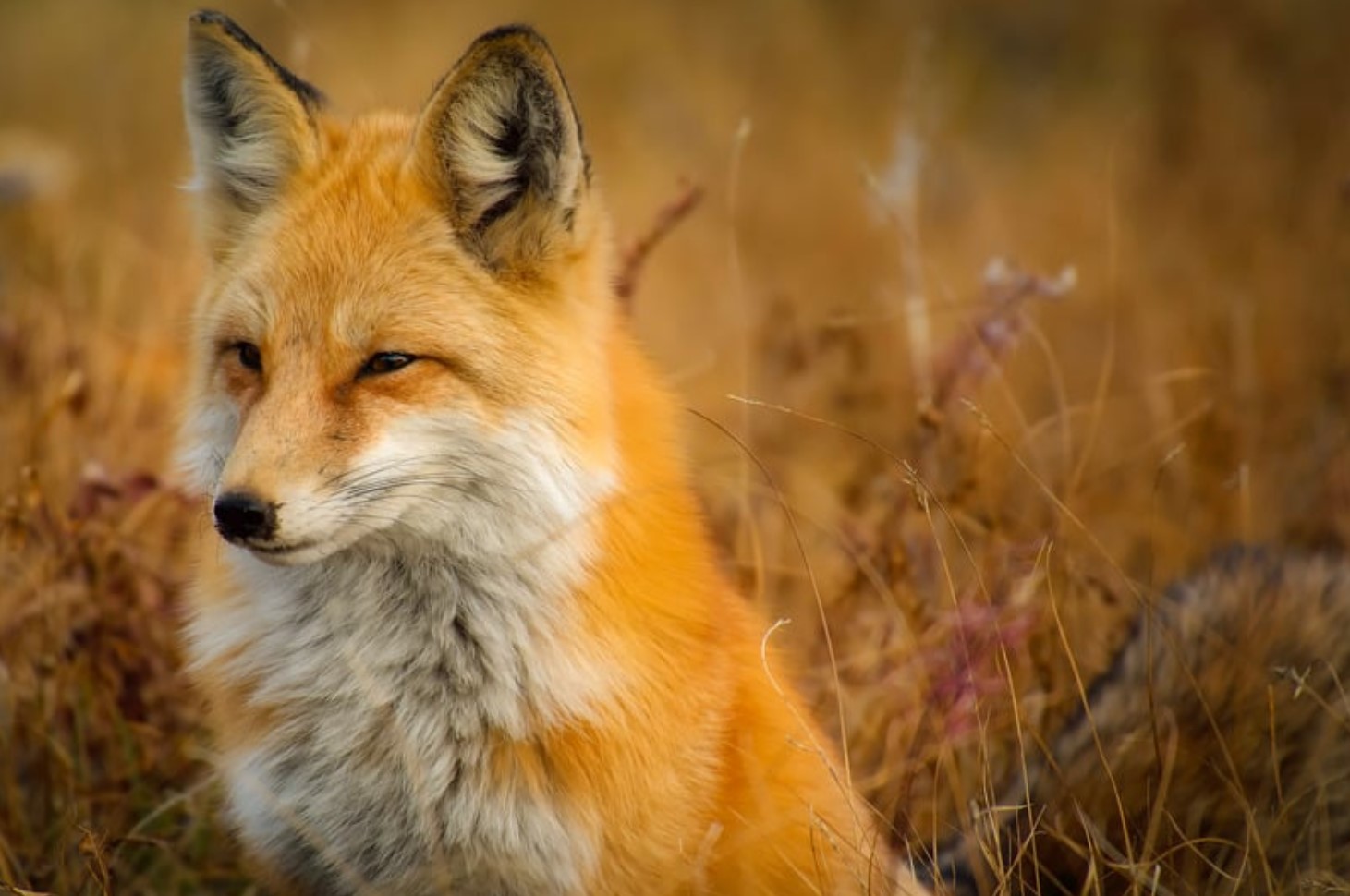
The Grey Fox
The grey fox (Urocyon cinereoargenteus) is a fascinating creature that has captured the hearts of many. This elusive fox is found throughout much of North and Central America, and its unique physical and behavioral characteristics make it stand out from other fox species.
One of the most interesting things about the grey fox is its ability to climb trees. Unlike other foxes, which are primarily ground-dwelling animals, the grey fox has strong, curved claws that allow it to scale trees with ease. This adaptation is thought to have evolved as a way for the grey fox to escape from predators or to hunt prey in the trees.
The grey fox is also known for its distinctive appearance. It has soft, grey fur on its back and sides, with reddish-brown fur on its legs, chest, and head. Its bushy tail has a black stripe down the middle, and its muzzle is pointed and fox-like. Like other foxes, the grey fox is a nocturnal animal and is most active at night.
- Grey foxes are omnivores, meaning they eat both meat and plants. Their diet includes small mammals, birds, insects, fruits, and nuts.
- They are solitary animals, only coming together during mating season or when raising young.
- Grey foxes have been known to live up to 12 years in captivity, but their lifespan in the wild is typically much shorter.
Despite being a relatively common species, the grey fox is often overshadowed by its more well-known cousin, the red fox. However, this unique and adaptable creature is certainly worth learning more about. From its tree-climbing abilities to its striking appearance, the grey fox is an impressive animal that deserves recognition.
The Swift Fox
The Swift Fox belongs to the Canidae family and is one of the smallest fox species. These foxes are native to North America and are found predominantly in the Great Plains region. Swift Foxes are generally nocturnal animals, and their diet consists of rodents, rabbits, and hares.
They have a distinctive appearance with their small size, reddish-brown fur, and black-tipped tails. They also have large ears, which help them hear their prey better. Swift Foxes are incredibly agile and can reach speeds of up to 50 kilometers per hour.
- The Origin of Swift Foxes
The origin of the Swift Fox can be traced back to North America, where they have been residing for thousands of years. The foxes prefer to live in grasslands and shrublands and can be found in various regions of Canada and the United States. Sadly, they were at the brink of extinction in the late 19th century, but conservation efforts have helped their population to recover.
| Characteristics of the Swift Fox | |
|---|---|
| Family | Canidae |
| Distribution | North America |
| Size | 30 to 50 cm |
| Weight | 1.8 to 3.5 kg |
Swift Foxes are solitary animals and live in dens, which they dig themselves or they can occupy abandoned badger holes. Their mating season begins in December, and the gestation period lasts around 50 days. The young foxes are born in March or April, and they usually stay with their mother for several months.
In conclusion, the Swift Fox is a fascinating and unique species that has adapted to living in North America’s vast grasslands and shrublands. Despite being one of the smallest fox species, these foxes are incredibly agile and have an impressive hunting ability. Conservation efforts have helped the population recover, which is great news for this enchanting creature.
The History Of Fox Sports Teams
Sports teams named after animals are always fascinating, particularly when it comes to fierce predators such as the fox. The history of fox sports teams dates back to the early 20th century. The first fox sports team came into existence in London, in 1905, known as “The Foxes.” This team played its football games at Fallowfield Stadium and existed until 1913.
Another prominent fox sports team is the “Leicester City Football Club.”Founded in 1884, this English professional football club is one of the oldest in the world. In the 1940s, when the footballers started buying the club shares, it became known as “The Foxes.” Leicester City is unique because of their mascot, a fox named Filbert Fox.
Some other well-known fox teams include the “San Francisco 49ers,” an American football team playing in the National Football League. The team was founded in 1946 and, over the years, has gained a loyal fan base nationwide. The team’s name, 49ers, refers to the miners who came to California during the gold rush.
- Leicester City Football Club
- San Francisco 49ers
| Team Name | Sport | Location |
|---|---|---|
| Leicester City Football Club | Football (Soccer) | Leicester, England |
| San Francisco 49ers | American Football | San Francisco, California, United States |
It’s not surprising to see these trends continue worldwide. The fox is still regarded as one of the most cunning and intelligent animals in history. And that’s precisely what sports teams want to be identified as: intelligent, sly, cunning, and fierce, the perfect attributes of a successful sports team.
All things considered, it’s easy to see why fox sports teams are so popular. Whether you are watching a live game or following news and updates, these teams inspire and unite fans worldwide. Such teams will continue to be a staple in sports culture for years to come.
Adaptation And Behavior Of The Fox Breed
The fox is a highly adaptable and intelligent animal that has been able to thrive in a variety of different environments. Their behavior and adaptation to their surroundings has made them one of the most successful predator species in the world.
One of the main reasons for the adaptability of the fox breed is their ability to change their diet according to the availability of food. In areas where they have easy access to prey such as rabbits, rodents and insects they will consume those. However, when these food sources become scarce, they will also eat fruit, berries and other vegetation to survive.
Foxes are also highly social animals and are known to live in family groups called packs. The pack consists of a dominant male and female, along with their offspring. These packs work together to hunt for food, protect their territory and raise their young. They are also known for their denning behavior, where they will find a sheltered location to create their dens.
- One of the most fascinating adaptation behaviors of the fox breed is their ability to communicate with each other
- This is done through a variety of vocalizations such as barks, whines and yips.
| Type of Fox | Adaptation |
|---|---|
| Arctic Fox | They have a thick fur coat that allows them to survive in sub-zero temperatures. |
| Fennec Fox | They have large ears that allow them to hear prey and predators from long distances. |
| Red Fox | They have excellent senses of vision, smell and hearing which makes them efficient hunters. |
In conclusion, the fox breed has evolved and adapted over time to survive in various environments. Their hunting techniques, communication, social behavior and diet flexibility make them a fascinating creature to study.
The Role Of Fox İn Pop Culture And Literature
Many people around the world have admired the fox for centuries. Whether it’s their sly demeanor or their stunning fur, these animals have become a symbol of fascination and admiration. One of the ways foxes have made their mark on the world is through their portrayal in pop culture and literature. From children’s books to epic movies, the fox holds a special place in our hearts.
In literature, the fox has been a popular character in many different genres. In children’s books such as “Fantastic Mr. Fox” by Roald Dahl, the fox is often portrayed as a cunning and witty creature. In contrast, in adult literature, the fox is often shown as more of a tragic character, such as in “The Little Prince” by Antoine de Saint-Exupéry where the fox is a wise and introspective figure.
- Foxes have also had a significant impact on pop culture. For example, in Japanese culture, the fox holds a special place in mythology and is often seen as a spirit or trickster figure. In American pop culture, the fox has been used as a mascot for a variety of sports teams, including the NFL’s Atlanta Falcons and the MLB’s Tampa Bay Devil Rays.
- However, the fox’s impact doesn’t stop there. In the world of music, the fox has been referenced in countless songs, often associated with the idea of cunning or seductiveness. For instance, the song “The Fox” by Norwegian group Ylvis became a viral sensation in 2013 for its quirky lyrics and catchy tune.
Overall, the role of the fox in pop culture and literature has been significant. The fox’s reputation for being cunning, sly, and occasionally even as a trickster has allowed it to become a beloved figure around the world. Whether it’s through children’s books, sports teams, or music, the fox has left its paw print on our culture and will continue to do so for many years to come.
The Fox As A Symbol İn Art
Throughout history, the fox has been a popular subject in art. This cunning and sly animal has been portrayed in various different ways, representing different things depending on the context. Some of the earliest depictions of foxes can be found in ancient Egyptian and Mesopotamian art, where they were worshipped as symbols of fertility.
In Western art, the fox has often been portrayed as a trickster or a deceiver. It is associated with slyness and cunning, and is often depicted in fables and stories as an antagonist. Famous literature like “The Fox and The Grapes” by Aesop and “The Little Prince” by Antoine de Saint-Exupéry have used the fox as a central character, highlighting its cleverness and quick wit.
- The famous Japanese artist Kuniyoshi created a woodblock print series featuring foxes, which were thought to have magical powers and the ability to shape-shift into human form in Japanese folklore.
- The fox has also been used as a symbol of beauty – from the well-known phrase “sly as a fox” to the fox’s fur, which has been used in fashion and art for centuries.
- The fox’s cleverness is often depicted in situations where it outwits other animals like rabbits, chickens and geese.
The fox is also a popular symbol in Native American art, where it is often seen as a messenger between the human world and the spirit world. In many Native American cultures, the fox is associated with intelligence, adaptability, and survival – traits that have allowed it to thrive in many habitats across the globe.
| Type of Symbolism | Artist/Work |
|---|---|
| Fertility | Ancient Egyptian and Mesopotamian art |
| Trikster and Deceiver | “The Fox and The Grapes” by Aesop |
| Magical Powers | Kuniyoshi’s woodblock print series featuring foxes |
| Beauty | Fashion and art incorporating fox fur |
| Cleverness | Fables where fox outwits other animals |
| Messenger Between Worlds | Native American art and folklore |
Today, the fox remains an important symbol in popular culture and art. Its meaningfulness and adaptability break through time and depict the fox as more than just an animal, but as an emblem of creativity and intelligence. So, the next time you spot a fox, take a moment to appreciate the depth of meaning and symbolism that this incredible animal represents.
The İnfluence Of Fox On Language And İdioms
Foxes are significantly represented in cultures and literature throughout the world. These animals have become symbols of trickery, intelligence, and cunning, making them a common occurrence in idioms and phrases. From Aesop’s fables to modern-day expressions, foxes have left their influence on language and idioms. Let’s explore further how foxes have played a role in shaping our everyday expressions.
The phrase “sly as a fox” is one of the most commonly used idioms, representing foxes’ characteristic smartness and resourcefulness. Along with this phrase, “to outfox someone” means to outsmart or outwit them, and “crazy like a fox” refers to someone who appears to be foolish, but they are actually quite clever.
- Another commonly known phrase is “to have a fox in the henhouse”, indicating that there is danger lurking amongst the group.
- “The fox and the grapes” is an enduring Aesop’s fable where the fox tries to eat the grapes but fails to do so. The phrase “sour grapes” is derived from this fable and means to pretend like something is not worth having because you can’t have it yourself.
- In Native American traditions, the famous trickster figure, often a fox, symbolizes cleverness and mischief. Many indigenous cultures have folklore that depicts the fox as an intelligent and wise animal that can outsmart even its feared enemies.
Not only are foxes commonly known in idioms, but their characteristics have also made their way into literature, music, popular culture, and even politics. The fox’s trickery and cunningness have become a symbol used to describe a wide range of situations.
| Examples | Description |
|---|---|
| The stylized illustration of a fox appears as the logo for the clothing brand “Abercrombie & Fitch.” | The logo of the brand is used to promote the clothing line by projecting the brand’s values through the characteristics of a fox. |
| The usage of fox symbolism in George Orwell’s novel Animal Farm represents the wily nature of the dictatorship. | The representation of the cleverness and cunning of the characters in the novel through a fox is a literary depiction of the said characteristics of the fox that is widely popular. |
| The nickname “The Fantastic Mr. Fox” was given to Richard Scudamore, the chief executive of the English Premier League in 2018. | The nickname was given by Stonewall Chief Executive Ruth Hunt to recognize Scudamore for his work in pushing LGBT issues in football. |
In conclusion, the influence of fox on language and idioms is undeniable. Their smartness, resourcefulness, and cunningness have become synonymous with our everyday expressions giving the animal rich cultural symbolism. Whether in literature, fables, music, or in the corporate world, the fox’s characteristics continue to symbolize cleverness and resourcefulness.
The Future Of The Fox Breed
As humans continue to encroach on the natural habitats of wild animals, many species are facing an uncertain future. The fox breed is no exception. With their incredible ability to adapt and thrive in diverse environments, foxes have managed to survive in many regions of the world. However, increasing human activity and climate change are both having a major impact on fox populations. In this post, we’ll explore what the future might hold for these fascinating animals.
One of the biggest threats facing foxes is habitat loss. As human populations grow, more and more land is being developed for agriculture, infrastructure, and housing. This means that foxes are losing the natural environments they rely on for food, shelter, and breeding. Fragmentation of habitats can also be a major problem, as it can separate fox populations and make it difficult for them to find mates, leading to reduced genetic diversity.
- Another major challenge facing foxes is climate change. As temperatures rise, foxes may be forced to move further north to find suitable habitats. This can lead to conflicts with other species in the area, as well as increased competition for resources. Additionally, changes in precipitation patterns can affect the availability of food, especially for foxes that rely on rodents and other small mammals.
- Predation is also a major concern for foxes. Although they are skilled hunters themselves, foxes may also fall victim to larger predators like wolves, coyotes, and eagles. With human activity driving some predator populations down while increasing others, the balance of wildlife in many regions is shifting, and foxes may struggle to find safe places to live.
Despite these challenges, there is hope for the future of foxes. Conservation efforts can help to protect remaining habitats and create new ones, ensuring that fox populations are able to continue breeding and thriving. In some cases, foxes may even be reintroduced to areas where they were previously extirpated. Research can also help us better understand the needs and behaviors of foxes, allowing us to develop more effective conservation strategies.
| Conclusion |
|---|
| In conclusion, the future of the fox breed is uncertain, but there is still hope. By taking action to protect and conserve their habitats, and by researching their needs and behaviors, we can help fox populations continue to thrive. It’s important for us to remember that our actions have an impact on the natural world around us, and that we have a responsibility to preserve it for generations to come. |
